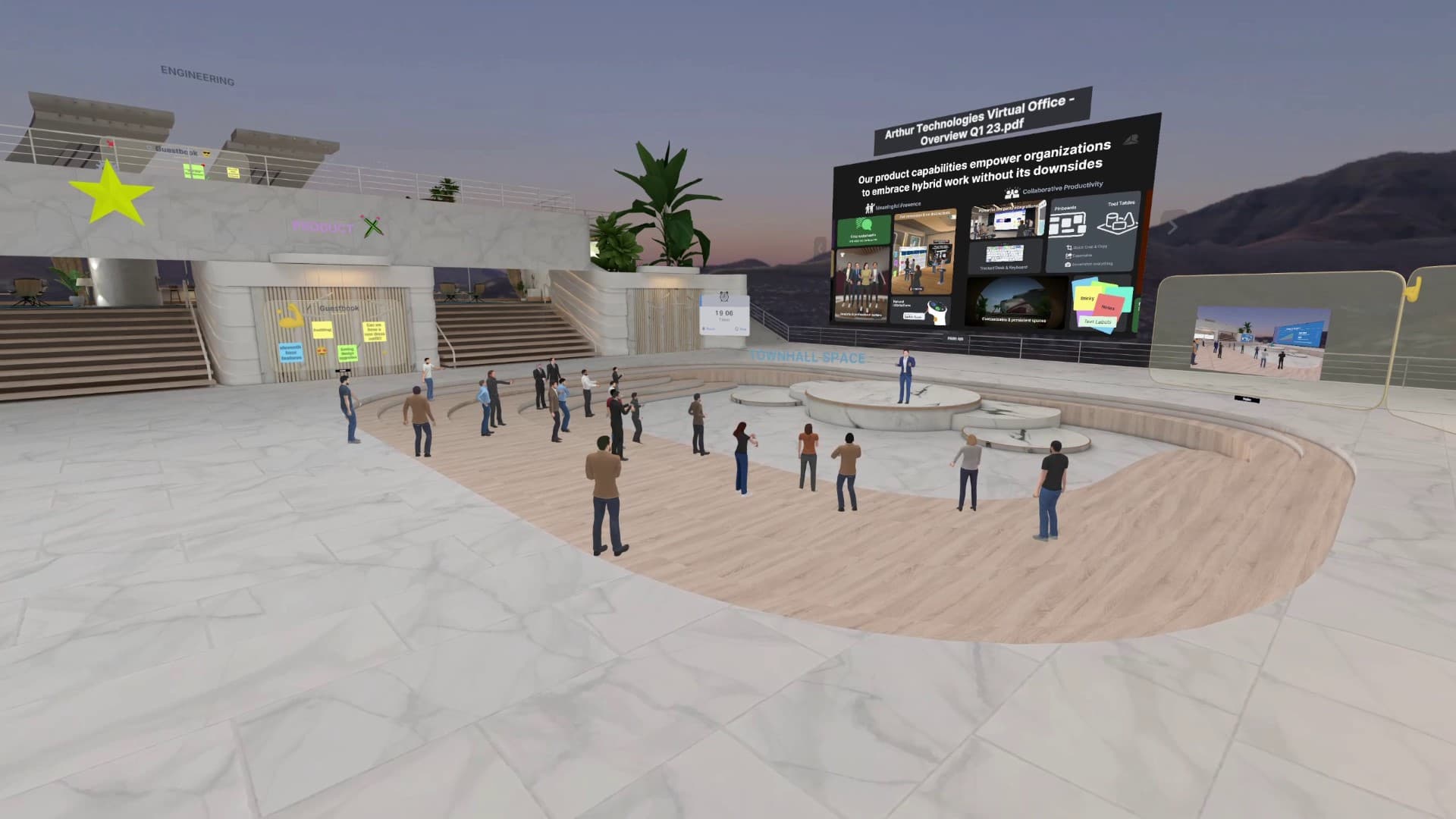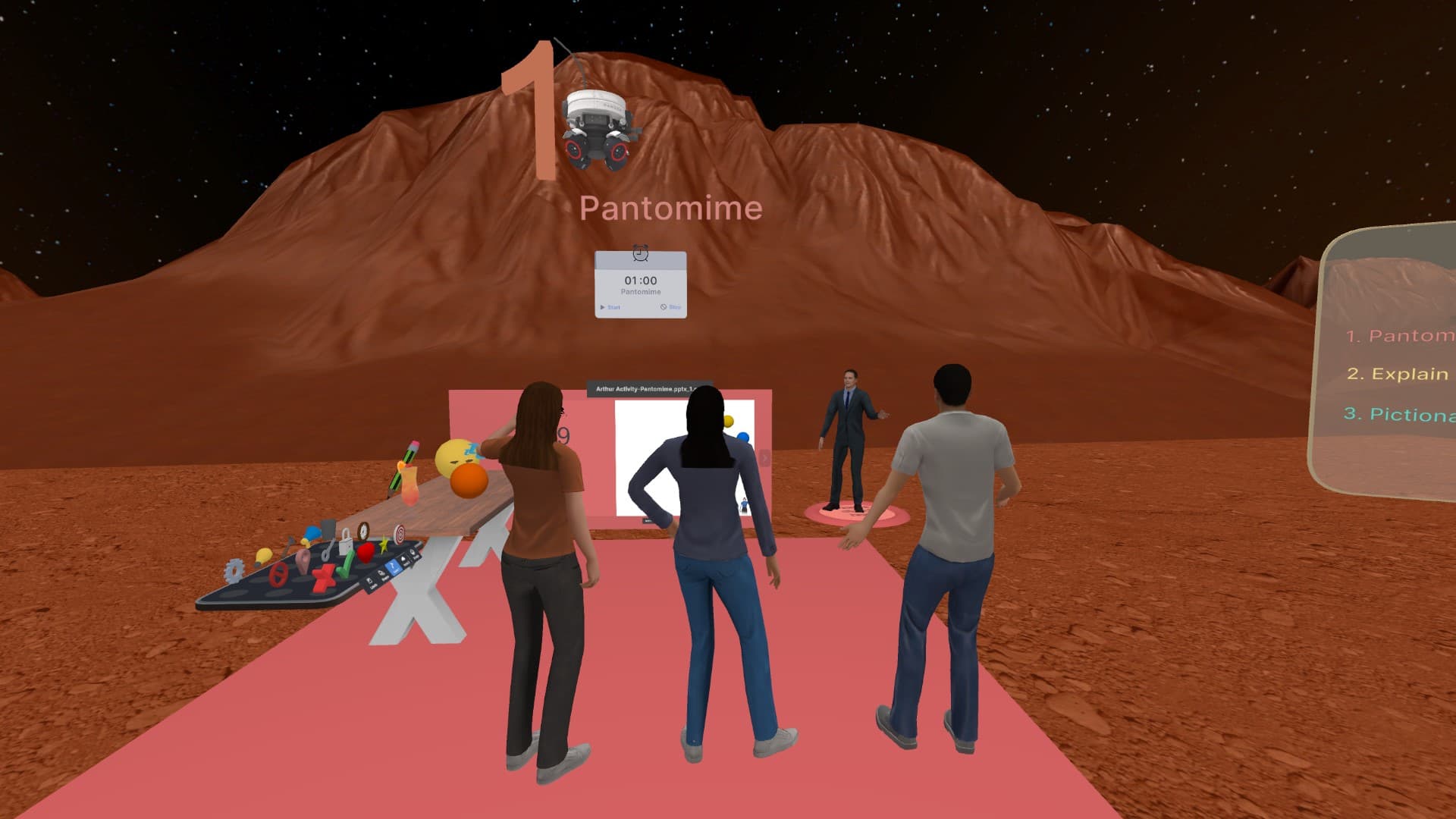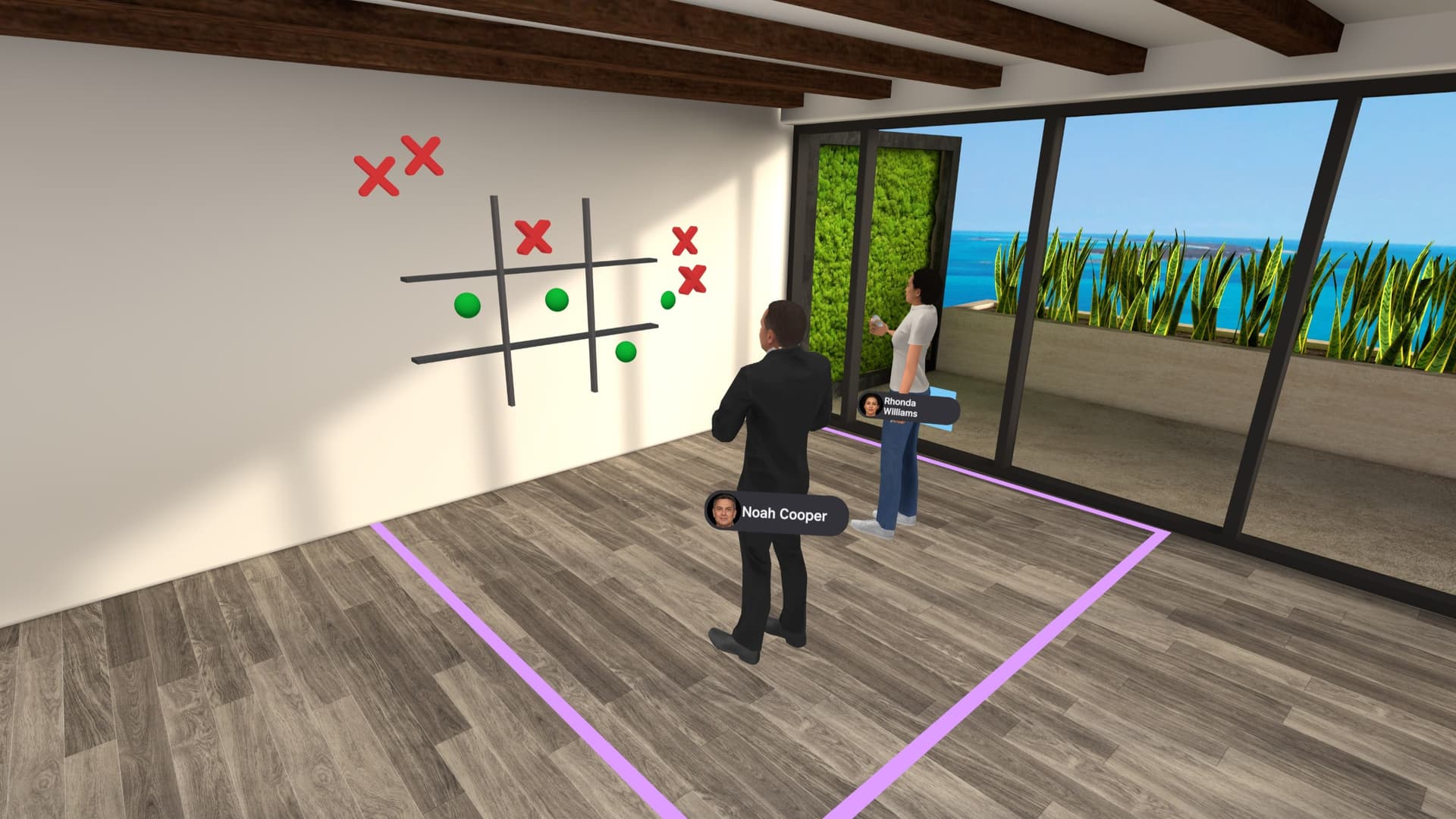Building a connected workforce in VR

Team building and employee engagement is a cornerstone of a company’s culture. Irrespective of the company size, office locations and other factors, it is crucial to weave the culture throughout the company. Building company culture, maintaining team morale and enhancing collaboration, all require shared experiences.
Organizing team events creates a shared experience among the participants which allows bonding to happen in a more organic manner as compared to, say, a mandatory leadership session. These events encourage communication and help develop interpersonal relationships. They also foster creativity and collaboration. A better team cohesion also reduces employee churn. Various studies show that the happiness of your employees will show up in your company’s performance and is thus a decisive factor to watch out for.

Disconnect workforce in the new world
Hybrid work – a mix of on-site and remote work with distributed teams – has become the default setting for many organizations (read this guide to understand hybrid better). Companies are getting ready to have more flexible work arrangements with less office space and employees having greater autonomy on their schedule and work location. A study have found that in a post pandemic landscape the productivity of a remote worker is set to increase by 5%.
However hybrid has its own obstacles. In a study conducted by Harvard Business Review, 40% of the managers and supervisors have expressed concerns over their ability to manage a remote team. This is mainly due to the lack of developing strong bonds and trust in the team. Not just that, employees are also more likely to switch jobs if they don’t feel engaged on the job. As more and more people [leave their job](https://time.com/6106322/the-great-resignation-jobs/#:~:text=A record-breaking 4.3 million,of Labor Statistics (BLS).&text=Americans%2C they say%2C are simply,by the current labor market) without seeing their colleagues faces even once, a high turnover and low productivity is guaranteed at any company.
Zoom happy hours or having an informal slack channel can help, but connection in 2D is not at par with the in person team events that enable stronger engagement and bonding. Videoconferencing solutions have often been mentioned as inadequate for developing a real connection. Considering that the importance of employee engagement is now higher than ever and enterprises need to create experiences just as powerful as they would have in person in the same location, a new technological solution is needed.

Virtual Reality to your rescue
Modern technology like video calls has undeniably improved the connectivity and communication, however it fails to create a powerful experience. Virtual reality is such an immersive technology. It is able to empower effective team building and bonding activities. VR can help enterprises build strong connections by allowing the participants to enjoy an emotive experience. It allows for memorable and impactful scenarios by creating a sense of presence among the participants.
Presence is the full feeling of having a person around you. It generates a physical and mental response like one would in any other social interaction. In video conferencing, the limitation of a flat computer screen really accentuates the fact that the team is geographically distributed. Adding a 3rd dimension to the interaction removes this concern and provides enterprises with a real in-person experience. Once the team is equipped with the technology they can consistently nurture connections through engaging experiences regardless of the location.
 The adaptability of the VR setup is another way companies can keep up the engagement and excitement among employees. You can, for example, easily organize a game of Pictionary in VR. The infinite space allows you to pull up as many whiteboards as you like and at the end of the game you will have an artistic gallery to yourself. Next time, you can invite your team to a Pantomime, Connect 4, Scavenger Hunt or any such engaging team building activity. Organising different activities outside the purview of day to day job, lets the participants interact in an informal setting and get to know each other at a personal level. Such activities give the participants to interact at a personal level and get to know colleagues through the activities.
The adaptability of the VR setup is another way companies can keep up the engagement and excitement among employees. You can, for example, easily organize a game of Pictionary in VR. The infinite space allows you to pull up as many whiteboards as you like and at the end of the game you will have an artistic gallery to yourself. Next time, you can invite your team to a Pantomime, Connect 4, Scavenger Hunt or any such engaging team building activity. Organising different activities outside the purview of day to day job, lets the participants interact in an informal setting and get to know each other at a personal level. Such activities give the participants to interact at a personal level and get to know colleagues through the activities.
 After a long day, you and your team can conclude it with an informal get together. In VR you can grab a virtual drink with the backdrop of the Alps or a scenic sunset, as you wish!
The whimsy of VR combined with interactive activities really brings out the social element among the participants. This increases the likelihood of people forming real relationships based on interactions beyond stand-ups and meeting calls. Overcoming the limitation of physical location, VR will be the key to growth, collaboration and connection for your hybrid team.
After a long day, you and your team can conclude it with an informal get together. In VR you can grab a virtual drink with the backdrop of the Alps or a scenic sunset, as you wish!
The whimsy of VR combined with interactive activities really brings out the social element among the participants. This increases the likelihood of people forming real relationships based on interactions beyond stand-ups and meeting calls. Overcoming the limitation of physical location, VR will be the key to growth, collaboration and connection for your hybrid team.